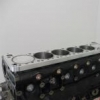Help Me With Some Turbo Related Maths
Announcements
-
Similar Content
-
Latest Posts
-
Vinyl paint always ends up coming off interior trim and looking like arse. For the a pillar trims.....just try cleaning them with fabric shampoo? Maybe ditto for the headliner.
-
Hi everyone, I'm generally new to DIY projects, and I've browsed this forum and watched a lot of youtube videos but still have a few questions Firstly, how does spray painting interior hold up? in particular like vinyl parts, my current mode of thinking is to use methyl spirits to take off original paint, clean/prep well, light coats, no primer or clear coat Secondly, what is recommended for the headliner and, for example (my car is a r34), the A-pillars which are some kind of other fabric material, do you think I would be successful at retrimming these? or would it be better to go down the blacking out via Dupli-Color Vinyl & Fabric Paint Any other advice / tips / tricks for refreshing/modernising these interiors? Thanks
-
As title says Pm a photo with what u have Type m style would be good As Hidding a thick front mount
-
Just note that when trying to find a short in a globe power supply, it is best to disconnect the globe as it will allow current through to earth. With it unplugged it is easier not to get confused. Also with the r32 wiring, the high beam has 2 power supplies (one when you push the switch forward and the other when you temporarily pull it back; so if it is the high beam blowing you will need to trace both circuits
-
$75 Location: Gold Coast Can post via Australia post
-





Recommended Posts
Create an account or sign in to comment
You need to be a member in order to leave a comment
Create an account
Sign up for a new account in our community. It's easy!
Register a new accountSign in
Already have an account? Sign in here.
Sign In Now